
Detective fiction is a subgenre of crime fiction and mystery fiction in which an investigator or a detective—whether professional, amateur or retired—investigates a crime, often murder. The detective genre began around the same time as speculative fiction and other genre fiction in the mid-nineteenth century and has remained extremely popular, particularly in novels. Some of the most famous heroes of detective fiction include C. Auguste Dupin, Sherlock Holmes, and Hercule Poirot. Juvenile stories featuring The Hardy Boys, Nancy Drew, and The Boxcar Children have also remained in print for several decades.

Crime fiction, detective story, murder mystery, mystery novel, and police novel are terms used to describe narratives that centre on criminal acts and especially on the investigation, either by an amateur or a professional detective, of a crime, often a murder. It is usually distinguished from mainstream fiction and other genres such as historical fiction or science fiction, but the boundaries are indistinct. Crime fiction has several subgenres, including detective fiction, courtroom drama, hard-boiled fiction, and legal thrillers. Most crime drama focuses on crime investigation and does not feature the courtroom. Suspense and mystery are key elements that are nearly ubiquitous to the genre.
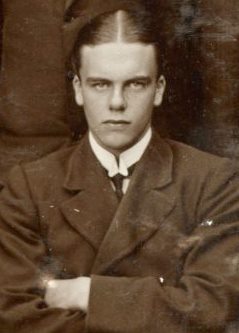
Anthony Berkeley Cox was an English crime writer. He wrote under several pen-names, including Francis Iles, Anthony Berkeley and A. Monmouth Platts.

The Detection Club was formed in 1930 by a group of British mystery writers, including Agatha Christie, Dorothy L. Sayers, Ronald Knox, Freeman Wills Crofts, Arthur Morrison, Hugh Walpole, John Rhode, Jessie Rickard, Baroness Emma Orczy, R. Austin Freeman, G. D. H. Cole, Margaret Cole, E. C. Bentley, Henry Wade, Constance Lindsay Taylor and H. C. Bailey. Anthony Berkeley was instrumental in setting up the club, and the first president was G. K. Chesterton. There is a fanciful initiation ritual with an oath written by Sayers, and the club holds regular dinner meetings in London.

The Golden Age of Detective Fiction was an era of classic murder mystery novels of similar patterns and styles, predominantly in the 1920s and 1930s. The Golden Age proper is in practice usually taken to refer to a type of fiction which was predominant in the 1920s and 1930s but had been written since at least 1911 and is still being written today. In his history of the detective story, Bloody Murder: From the Detective Story to the Crime Novel, the author Julian Symons heads two chapters devoted to the Golden Age as "the Twenties" and "the Thirties". Symons notes that Philip Van Doren Stern's article, "The Case of the Corpse in the Blind Alley" (1941), "could serve ... as an obituary for the Golden Age." Authors Agatha Christie, Dorothy L. Sayers, Margery Allingham, and Ngaio Marsh have been collectively called the Queens of Crime.
Kenneth Martin Edwards is a British crime novelist, whose work has won multiple awards including lifetime achievement awards for his fiction, non-fiction, short fiction, and scholarship in the UK and the United States. In addition to translations into various European languages, his books have been translated into Japanese, Chinese, Korean, and Taiwanese. As a crime fiction critic and historian, and also in his career as a solicitor, he has written non-fiction books and many articles. He is the current President of the Detection Club and in 2020 was awarded the Crime Writers' Association's Diamond Dagger, the highest honour in British crime writing, in recognition of the "sustained excellence" of his work in the genre.

The Verdict of You All is a 1926 mystery detective novel by the British writer Henry Wade, his debut novel. Both this and his following novel The Missing Partners revolve around potential miscarriages of justice. It was published in the United States by Payson and Clarke in 1927. A success it launched his career as one of the prominent writers during the Golden Age of Detective Fiction. The title refers to the traditional question asked in court by a judge of the jury to establish whether they have reached a unanimous verdict.
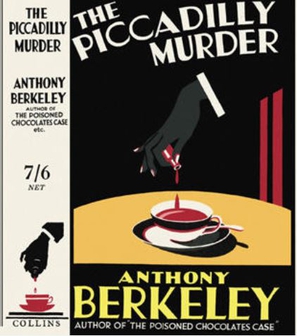
The Piccadilly Murder is a 1929 mystery detective novel by the British writer Anthony Berkeley. Berkley was a prominent writer during the Golden Age of Detective Fiction, known for his private detective Roger Sheringham series and his development of the inverted detective story. Although not part of the Sheringham series it featured the character of Chief Inspector Moresby of Scotland Yard who also appeared several times with Sheringham. Moresby reappeared with the chief protagonist Chitterwick in a sequel Trial and Error in 1937.

Trial and Error is a 1937 mystery detective novel by the British writer Anthony Berkeley. It was a loose sequel to the 1929 novel The Piccadilly Murder, featuring two of the characters from the earlier work the unprepossessing but shrewd Ambrose Chitterwick and Chief Inspector Moresby of Scotland Yard. Berkeley was a prominent author of the Golden Age of Detective Fiction, known for his inverted detective stories.
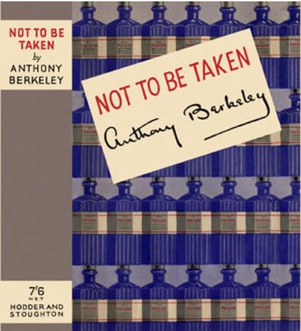
Not to Be Taken is a 1938 mystery detective novel by the British writer Anthony Berkeley. It was one of several stand-alone novels he wrote alongside his series featuring the private detective Roger Sheringham. It was written when the Golden Age of Detective Fiction was at its height. It was published in the United States with the alternative title A Puzzle in Poison.
Irish writer Alister McAllister [1877-1943] wrote several plays under the pseudonym Anthony Wharton and later, after moving to England, wrote a series of mystery novels using the pseudonym Lynn Brock.

Death in the House is a 1939 detective novel by the British writer Anthony Berkeley. It was one of a number of stand-alone novels he wrote alongside his series featuring the private detective Roger Sheringham. It was his penultimate novel, and his final whodunnit. In later years he continued writing reviews of other crime novels, but no longer wrote his own.
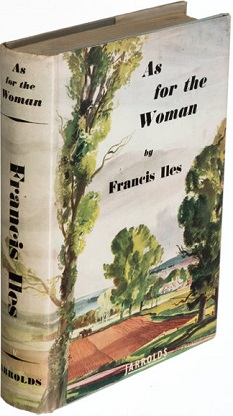
As for the Woman is a 1939 novel by the British writer Anthony Berkeley, written under the pen name of Francis Iles. It was the final novel of Berkeley, a key writer of the Golden Age of Detective Fiction, as he concentrated on reviewing after this point. He later told fellow writer John Dickson Carr that he produced the book during a period of great emotional strain and that its poor commercial and critical reception affected him badly. Thereafter he turned down all offers to write further novels. Although two further novels under the Iles name were announced by the publisher, neither of them were ever released.

Shot at Dawn is a 1934 detective novel by John Rhode, the pen name of the British writer Cecil Street. It is the nineteenth in his long-running series of novels featuring Lancelot Priestley, a Golden Age armchair detective.
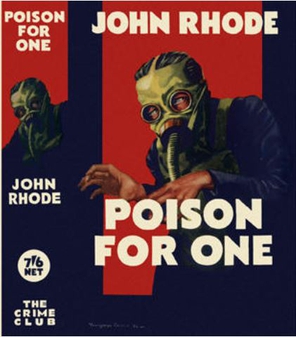
Poison for One is a 1934 detective novel by John Rhode, the pen name of the British writer Cecil Street. It is the eighteenth in his long-running series of novels featuring Lancelot Priestley, a Golden Age armchair detective. It combines elements of the locked room mystery and country house mystery.

The Two Graphs is a 1950 detective novel by John Rhode, the pen name of the British writer Cecil Street. It is the fiftieth in his long-running series of novels featuring Lancelot Priestley, a Golden Age armchair detective. It was published in America by Dodd Mead under the alternative title Double Identities. Writing in The Observer Maurice Richardson noted a "slight slackening of tension towards the finish but an excellent specimen of Rhode’s later period."

Vegetable Duck is a 1944 detective novel by John Rhode, the pen name of the British writer Cecil Street. It is the fortieth in his long-running series of novels featuring Lancelot Priestley, a Golden Age armchair detective. The title refers to a dish including a Marrow stuffed with minced beef, which features in the plot. It has been described as "one of the oddest titles for a detective novel in the genre". Although written during wartime, the setting was post-war. It was published in America by Dodd Mead under the alternative title Too Many Suspects.
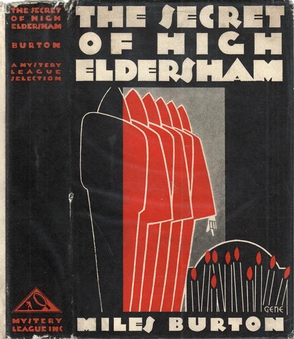
The Secret of High Eldersham is a 1930 detective novel by Miles Burton, the pen name of the British writer Cecil Street. It was the first novel in a lengthy series featuring the detective Desmond Merrion. Street was one of the most prolific authors of the Golden Age of Detective Fiction and had already enjoyed success with his Doctor Priestley series, written under the name of John Rhode. In 1931 it was published in the United States by the Mystery League under the altered title The Mystery of High Eldersham. Originally published in Britain by the Collins Crime Club, it was reissued in 2016 by British Library Publishing as part of a series of crime novels the Golden Age.
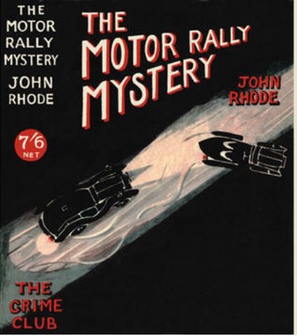
The Motor Rally Mystery is a 1933 detective novel by John Rhode, the pen name of the British writer Cecil Street. It is the fourteenth in his long-running series of novels featuring Lancelot Priestley, a Golden Age armchair detective. It was published in the United States by Dodd Mead under the alternative title Dr. Priestley Lays a Trap. It takes place against the backdrop of the real life RAC Motor Rally, which concluded at Torquay.

The Robthorne Mystery is a 1934 detective novel by John Rhode, the pen name of the British writer Cecil Street. It is the seventeenth in his long-running series of novels featuring Lancelot Priestley, a Golden Age armchair detective. It was published in the United States the same year by Dodd Mead.


















